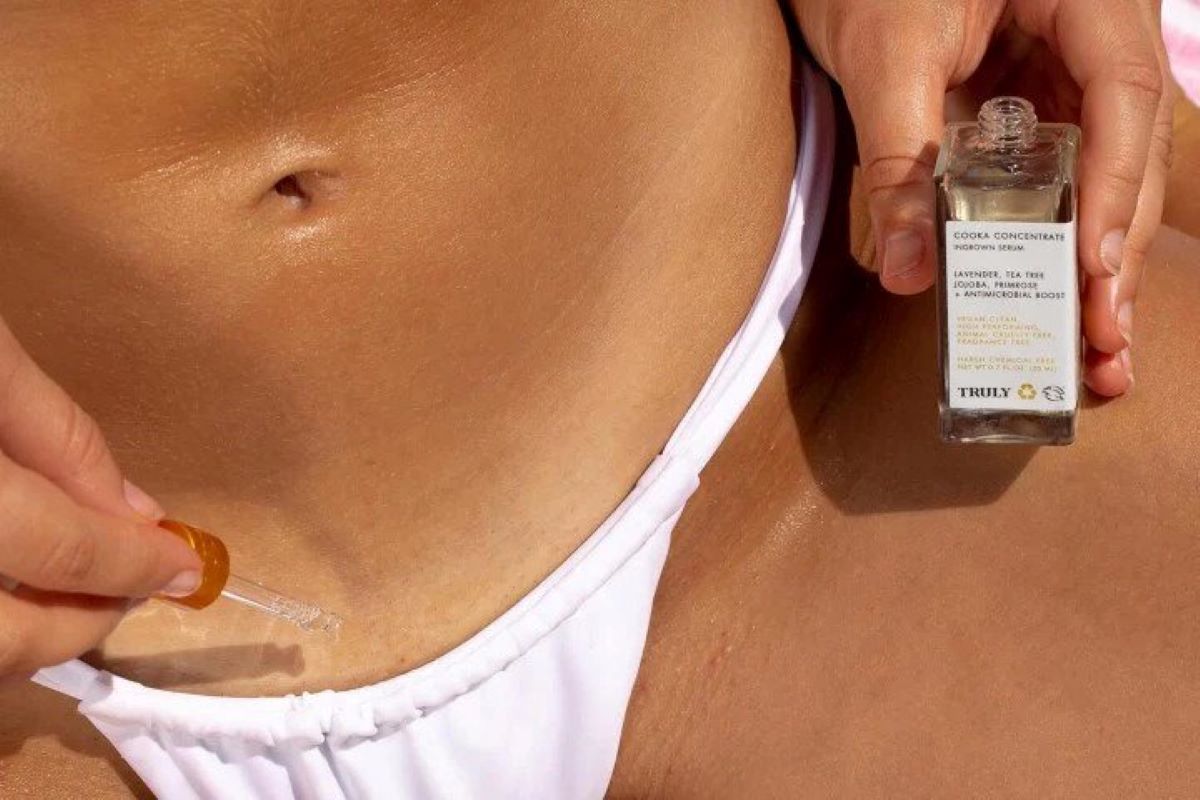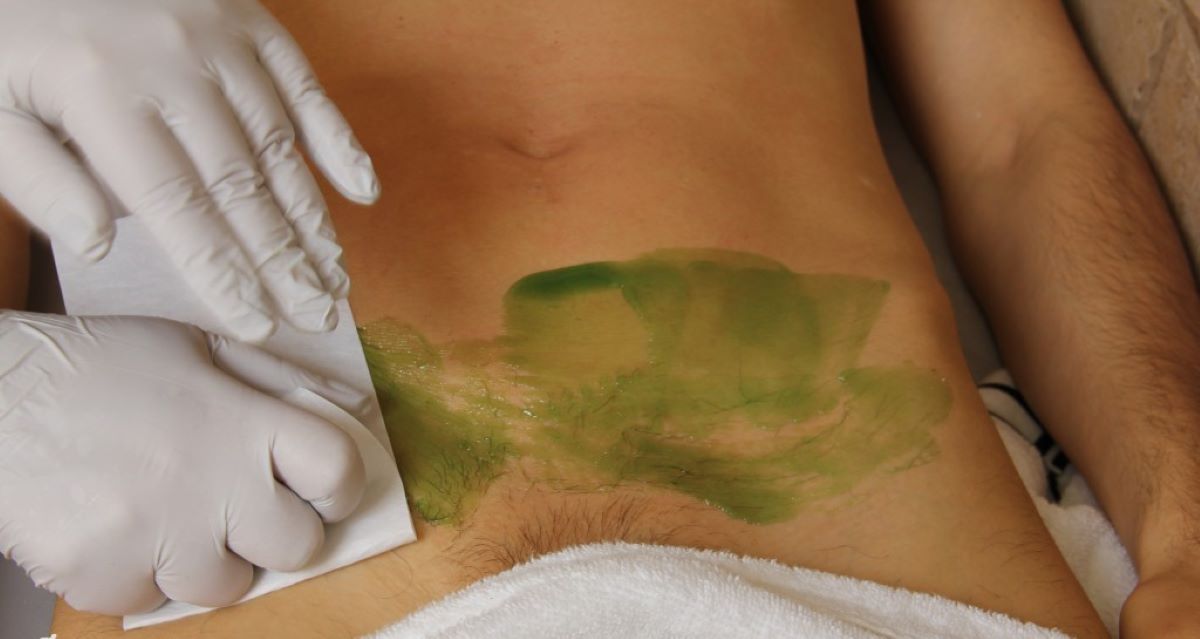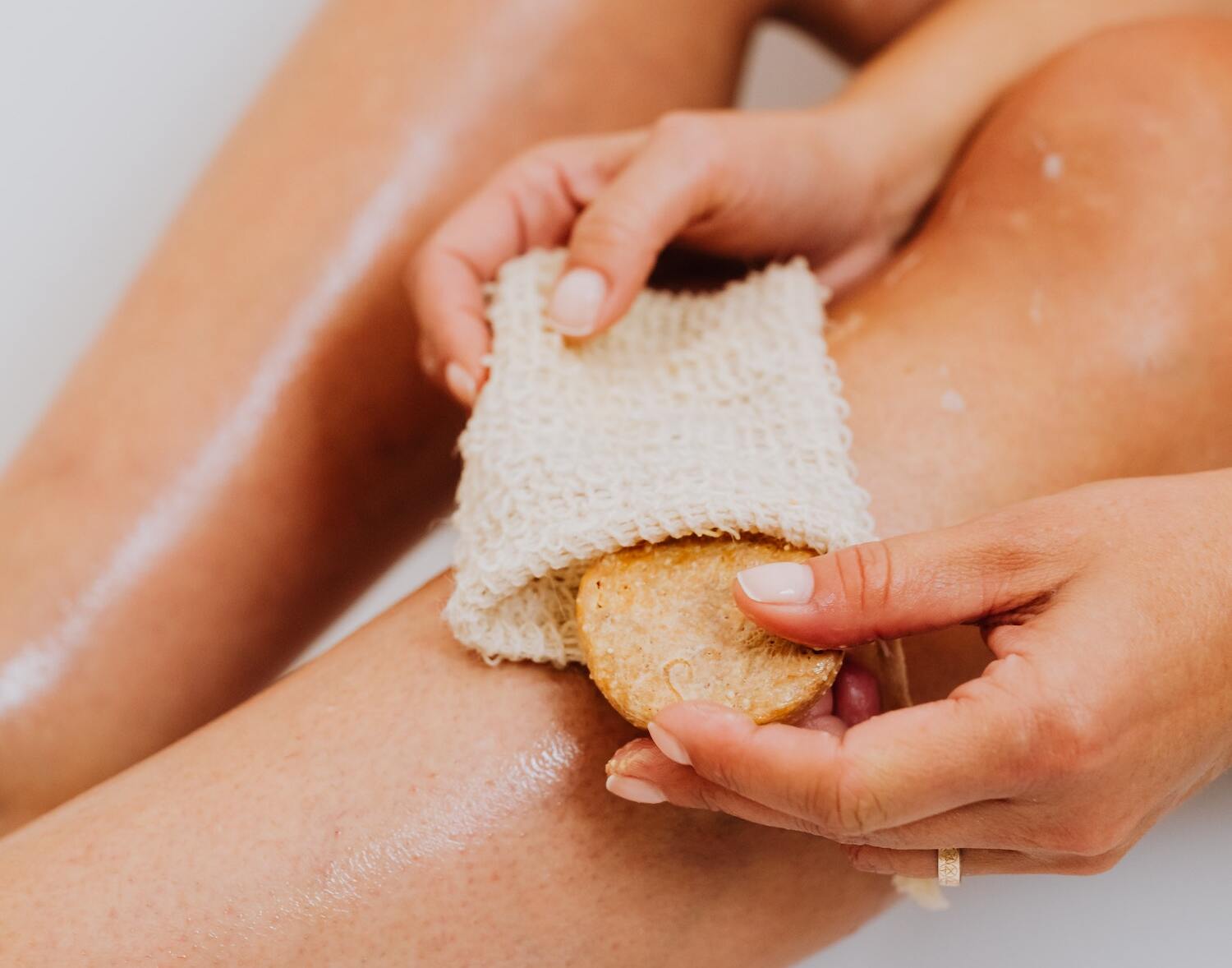Home>Women's Underwear>Bikinis>What To Put On After Bikini Wax


Bikinis
What To Put On After Bikini Wax
Modified: September 23, 2023
Discover the best post-bikini wax care routine! Learn what to put on after a bikini wax to soothe and protect your skin. Find the perfect products for your bikini line with our expert recommendations.
(Many of the links in this article redirect to a specific reviewed product. Your purchase of these products through affiliate links helps to generate commission for Under-tec.com, at no extra cost. Learn more)
Table of Contents
Introduction
When it comes to achieving a smooth and hair-free bikini area, many women opt for bikini waxing. It is a popular hair removal method that provides longer-lasting results compared to shaving or using depilatory creams. However, the process of getting a bikini wax can leave your skin feeling sensitive and in need of some post-wax care.
In this article, we will discuss what to put on after a bikini wax and provide you with some essential tips for aftercare. From choosing the right clothing to maintaining proper hygiene, we will guide you through the process of caring for your skin post-waxing. So, let’s dive in!
Before we delve into the aftercare tips, it’s essential to prepare adequately for your bikini wax to minimize discomfort and achieve the best results. Make sure to exfoliate the area a day or two before your appointment to remove dead skin cells and prevent ingrown hairs. Avoid applying any lotions or oils before waxing, as they can create a barrier between the wax and your hair, making it less effective.
During the bikini wax, a trained esthetician will remove unwanted hair from your bikini area using either hot wax or strip wax. The process involves applying wax to the desired area and then swiftly removing it, taking the hair along with it. While the immediate result is smooth, hair-free skin, it is crucial to follow a proper aftercare routine to maintain the results and promote healthy skin.
Keep reading to learn more about what to put on after a bikini wax and how to take care of your skin during the healing process.
Preparing for the Bikini Wax
Getting ready for a bikini wax is an important step to ensure a successful and comfortable experience. Here are some essential tips to help you prepare for your waxing appointment:
- Grow out your hair: For the wax to be effective, your hair should be at least a quarter of an inch long. This allows the wax to adhere to the hair properly and ensures optimal hair removal. Avoid shaving or trimming the hair for at least two weeks before your appointment.
- Exfoliate the area: Gently exfoliating the bikini area a day or two before your waxing appointment can help remove dead skin cells and prevent ingrown hairs. Use a mild exfoliating scrub or a soft brush to gently exfoliate the skin. Avoid harsh scrubs that can cause skin irritation.
- Avoid moisturizers and oils: On the day of your appointment, make sure to avoid applying any moisturizers, oils, or lotions to the bikini area. These products can create a barrier and interfere with the waxing process.
- Consider pain management options: If you are concerned about discomfort during the waxing process, you can take over-the-counter pain relievers, such as ibuprofen, 30 minutes before your appointment. This can help minimize any potential pain or inflammation.
- Wear loose and comfortable clothing: Opt for loose-fitting underwear and clothing on the day of your appointment. Tight clothing can rub against the newly waxed area and cause irritation. Choose breathable fabrics that won’t trap moisture and promote airflow.
By following these preparatory tips, you can ensure that your bikini wax is as smooth and comfortable as possible. By allowing your hair to properly grow and prepping your skin, you are setting yourself up for a successful waxing experience.
Aftercare Tips
After your bikini wax, it’s crucial to take proper care of your skin to promote healing and maintain the results. Here are some essential aftercare tips to follow:
- Avoid heat and friction: For at least 24 hours after your waxing session, avoid activities that can cause excessive heat and friction on the waxed area. This includes taking hot showers, using saunas or steam rooms, and engaging in vigorous exercise or activities that may cause sweating. Heat and friction can irritate the skin and lead to redness or inflammation.
- Keep the area clean: Gently cleanse the waxed area with a mild, non-irritating cleanser to keep it clean and free from bacteria. Avoid using harsh soaps or scrubs that can further irritate the sensitive skin. Pat the area dry with a clean towel instead of rubbing it.
- Avoid swimming pools and hot tubs: Chlorine and other chemicals in swimming pools or hot tubs can irritate your freshly waxed skin. It is recommended to avoid swimming for at least 24-48 hours after your waxing session.
- Avoid sun exposure: Direct exposure to the sun can make your skin more sensitive and prone to irritation. Stay out of direct sunlight for at least 24 hours after your wax. If you need to go outside, apply a broad-spectrum sunscreen with at least SPF 30 to protect the waxed area.
- Avoid exfoliating for a few days: While exfoliation is beneficial for preventing ingrown hairs, it’s best to avoid it for a few days after your wax. Giving your skin time to heal and recover will reduce the risk of irritation or inflammation.
By following these aftercare tips, you can help your skin recover quickly and maintain the smooth results of your bikini wax. It’s essential to treat your skin gently and avoid any activities or products that may cause irritation or discomfort. Remember, every person’s skin is different, so listen to your body and adjust your aftercare routine accordingly.
Clothing Options
Choosing the right clothing after a bikini wax can help you stay comfortable and prevent any irritation to the waxed area. Here are some clothing options to consider:
- Loose-fitting underwear: Opt for breathable and loose-fitting underwear made of soft fabrics like cotton. Avoid wearing tight panties or thongs that may rub against the waxed area and cause irritation or ingrown hairs.
- Avoid synthetic materials: Synthetic fabrics can trap moisture and heat, which can irritate the skin. Instead, choose natural fabrics like cotton or bamboo that allow proper airflow and minimize friction.
- High-waisted bottoms: If you’ve had a Brazilian or extended bikini wax, you may want to wear high-waisted bottoms or skirts to avoid any unnecessary rubbing or chafing on the sensitive skin. High-waisted bottoms provide coverage and support while keeping you comfortable.
- Flowy dresses or skirts: Wearing flowy dresses or skirts can keep the waxed area free from friction and provide ventilation. Opt for lightweight fabrics that won’t cling to the skin and allow your skin to breathe.
- Avoid tight jeans or leggings: Tight-fitting jeans or leggings can rub against the waxed area and cause discomfort or irritation. It’s best to avoid wearing them for at least a day or two after your waxing session.
Choosing the right clothing after a bikini wax can make a significant difference in your comfort level and skin’s well-being. Opt for loose-fitting, breathable fabrics that minimize friction and allow your skin to breathe. By taking these clothing options into consideration, you will help maintain the results of your bikini wax and promote proper healing.
Hygiene Practices
Maintaining proper hygiene after a bikini wax is crucial to prevent any infection or irritation. Here are some essential hygiene practices to follow:
- Wash your hands: Before and after touching the waxed area, make sure to wash your hands thoroughly with soap and warm water. This will help remove any bacteria and prevent the spread of infection.
- Avoid touching the area: As tempting as it may be, try to avoid touching or scratching the waxed area. Your hands may carry bacteria that can lead to infection or irritation. If you need to touch the area, make sure your hands are clean or use a clean cloth or tissue.
- Avoid sexual activity: It is advisable to abstain from sexual activity for at least 24-48 hours after your bikini wax to allow the skin to heal. Friction and bacteria from sexual activity can increase the risk of infection and irritation.
- Change your underwear regularly: To maintain proper hygiene, change your underwear daily and opt for clean, breathable fabric. This will help minimize the accumulation of sweat and bacteria in the waxed area.
- Use a clean towel: After showering or bathing, use a clean towel to pat the waxed area dry. Avoid shared or dirty towels, as they can harbor bacteria and increase the risk of infection.
Following these hygiene practices will help keep your bikini area clean and prevent any potential complications. Remember to be gentle and avoid any aggressive scrubbing or harsh products that can irritate the freshly waxed skin. If you have any concerns or notice any signs of infection, such as redness, swelling, or pus, consult a healthcare professional.
Post-Wax Skin Care
Proper skin care after a bikini wax is essential to soothe the skin and maintain its health. Here are some post-wax skin care tips to follow:
- Apply a soothing gel or cream: After your wax, apply a soothing gel or cream specifically designed for post-wax care. Look for products that contain ingredients like aloe vera or chamomile, as they have calming and anti-inflammatory properties.
- Avoid hot baths and showers: For the first 24-48 hours after your wax, avoid hot baths or showers. Hot water can irritate the skin and cause discomfort. Opt for lukewarm water instead, and make sure to gently cleanse the waxed area using a mild, fragrance-free soap.
- Avoid exfoliating: While exfoliation is important for preventing ingrown hairs, it’s best to avoid any form of exfoliation for a few days after your wax. This will give your skin time to heal and prevent any further irritation. After a few days, you can gradually introduce gentle exfoliation techniques.
- Moisturize regularly: Keep your skin hydrated and supple by applying a moisturizer to the waxed area daily. Look for a fragrance-free, non-comedogenic lotion that is gentle on the skin. Moisturizing helps soothe the skin and prevent dryness or flakiness.
- Avoid tight clothing: Choose loose-fitting clothing made of breathable fabrics after your wax to allow proper airflow and minimize friction. Tight clothing can rub against the waxed area and cause irritation or ingrown hairs.
By following these post-wax skin care tips, you can promote healthy and well-nourished skin while extending the results of your bikini wax. Always listen to your skin and adjust your routine accordingly. If you experience prolonged irritation, redness, or any other concerning symptoms, seek advice from a skincare professional.
Potential Side Effects and Remedies
While bikini waxing is generally safe, there are potential side effects that you may experience. Here are some common side effects and remedies to alleviate them:
- Redness and inflammation: It is normal to experience some redness and inflammation after a bikini wax. Applying a cold compress or a soothing gel with anti-inflammatory properties can help reduce redness and calm the skin. Avoid using any harsh or fragranced products that can further irritate the skin.
- Ingrown hairs: Ingrown hairs are a common occurrence after waxing. To prevent them, gently exfoliate the area a few days after your wax to remove dead skin cells and allow the hair to grow properly. Avoid picking or squeezing ingrown hairs, as this can lead to infection. If you have persistent ingrown hairs, you can consult a dermatologist for further treatment options.
- Skin sensitivity: Your skin may feel sensitive and tender after a bikini wax. Avoid activities that can further irritate the skin, such as hot showers, intense workouts, or excessive friction. Take care to choose gentle, fragrance-free products that won’t cause further discomfort.
- Post-wax acne or breakouts: Some individuals may experience post-wax acne or breakouts, especially if they have sensitive or acne-prone skin. To prevent this, keep the waxed area clean and avoid touching it with dirty hands. Use non-comedogenic and oil-free skincare products to minimize the likelihood of clogged pores.
- Allergic reactions: In rare cases, individuals may experience allergic reactions to the wax or other products used during the waxing process. If you notice signs of an allergic reaction, such as severe redness, itching, or swelling, seek medical attention immediately. It is essential to inform your esthetician about any known allergies before the waxing session.
Remember, everyone’s skin reacts differently to waxing, and it’s important to listen to your body. If you have any concerns or experience prolonged or severe side effects, it is best to consult a dermatologist or skincare professional for guidance and appropriate remedies.
Conclusion
Proper aftercare is crucial for maintaining smooth and healthy skin after a bikini wax. By following the right steps and incorporating essential tips into your post-wax routine, you can ensure optimal results and minimize potential side effects.
As discussed in this article, preparing for a bikini wax by growing out your hair, exfoliating, and avoiding moisturizers is essential. Afterward, taking care of your skin includes gentle cleansing, avoiding heat and friction, and wearing loose-fitting clothing. Remembering proper hygiene practices such as washing your hands, avoiding touching the area, and changing underwear regularly can help prevent any infection or irritation.
Additionally, incorporating post-wax skincare, such as using soothing gels or creams and moisturizing daily, can help calm the skin and maintain its health. Being mindful of potential side effects like redness, ingrown hairs, and skin sensitivity, and applying the appropriate remedies can help alleviate discomfort and promote healing.
However, it’s important to note that everyone’s skin is unique, and what works for one person may not work for another. It’s crucial to listen to your body and adjust your aftercare routine accordingly. If you have any concerns or experience severe or prolonged side effects, it is always wise to seek guidance from a skincare professional.
So, now that you’re armed with the knowledge of what to put on after a bikini wax and how to take care of your skin during the healing process, you can confidently embrace the benefits of this hair removal method. Remember, the key to a successful bikini wax is not only in the treatment itself but also in the care you provide afterward to keep your skin looking and feeling its best.








